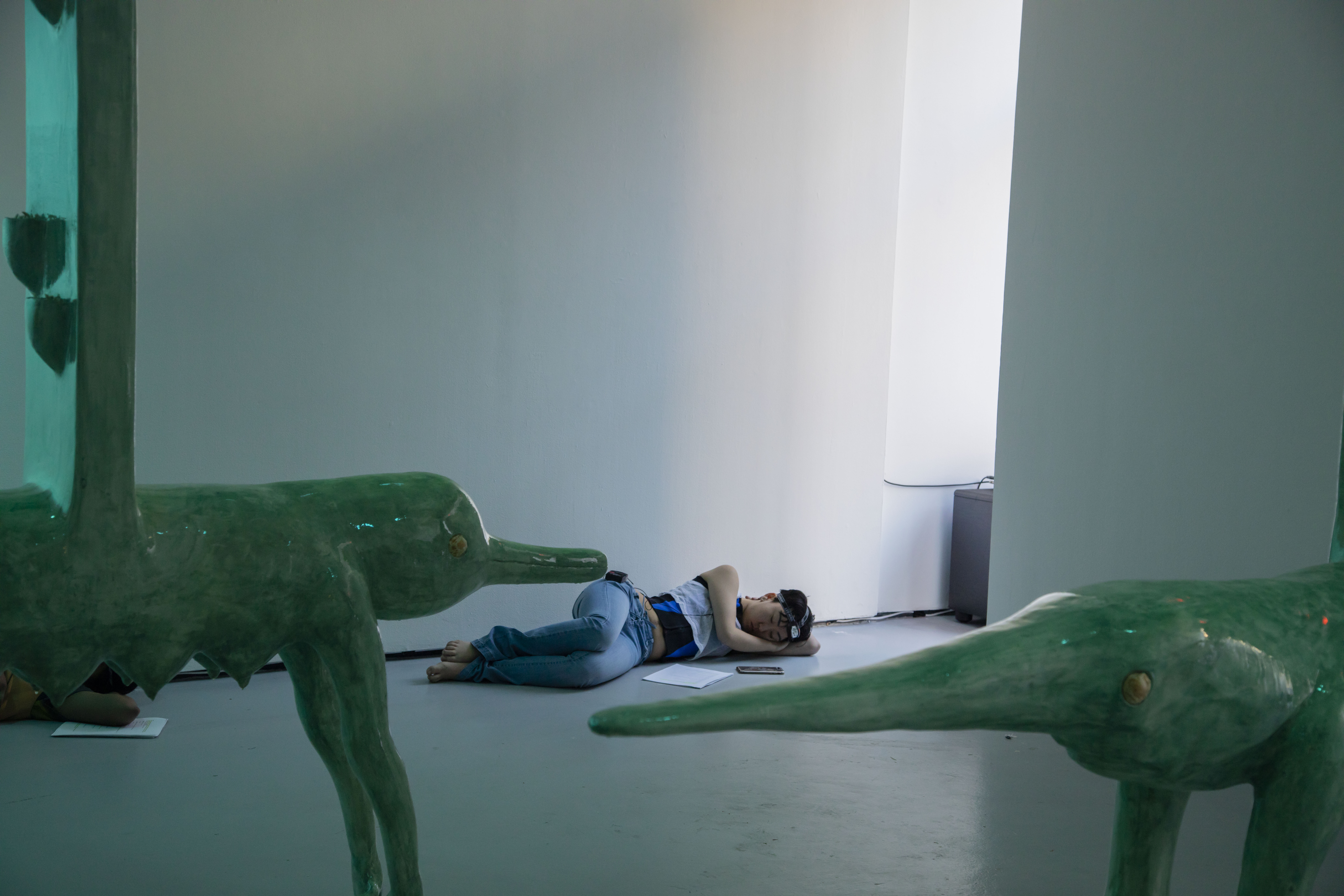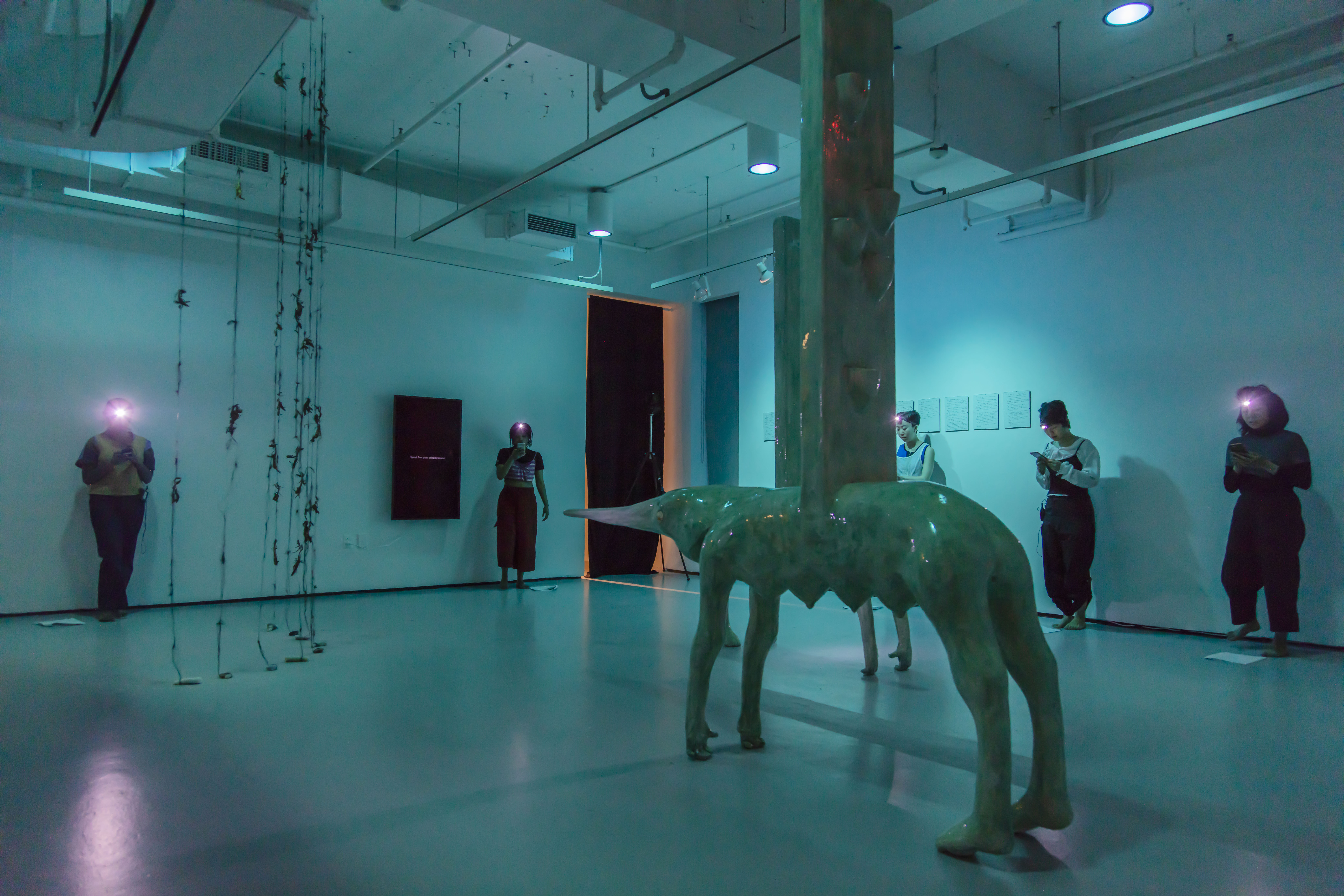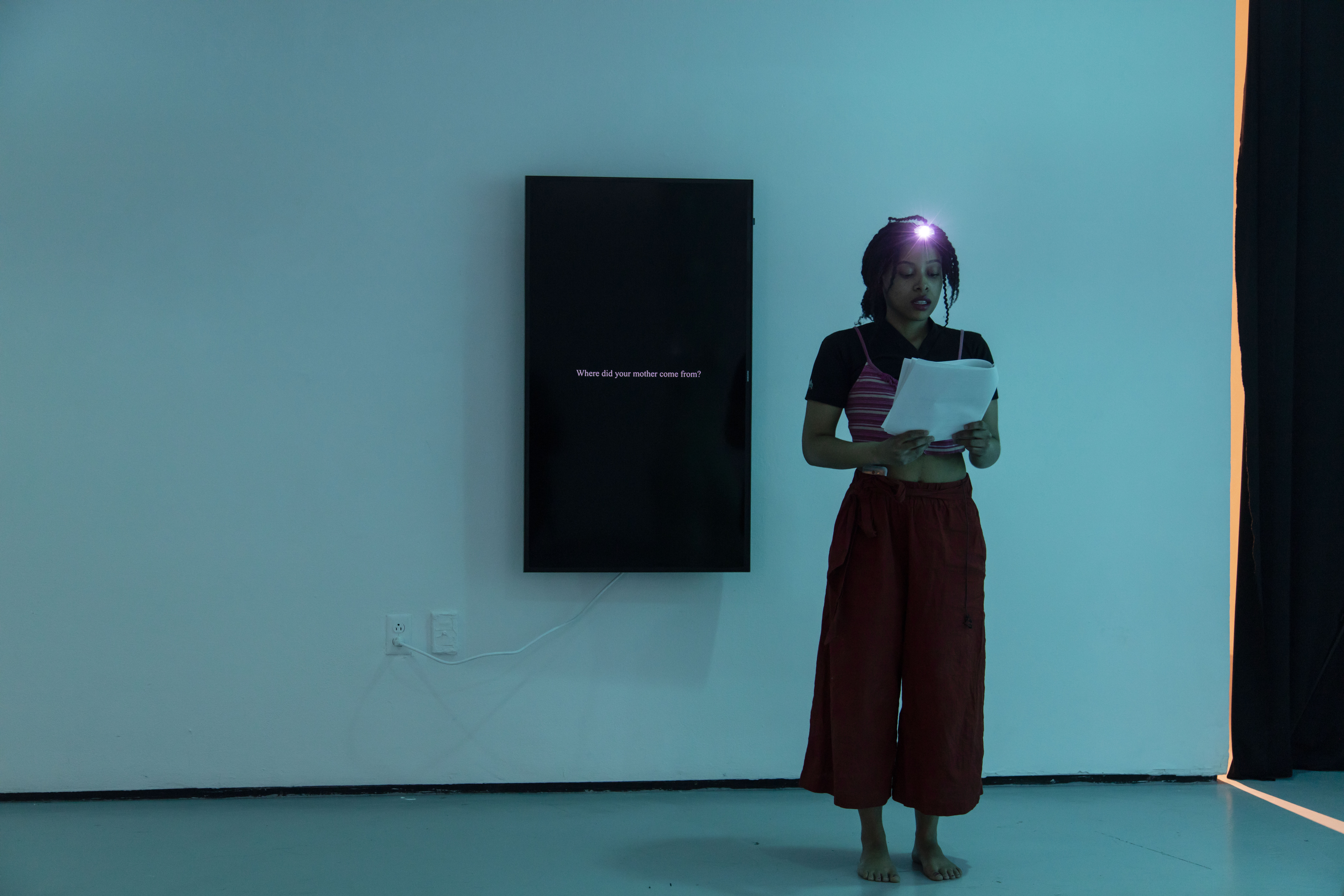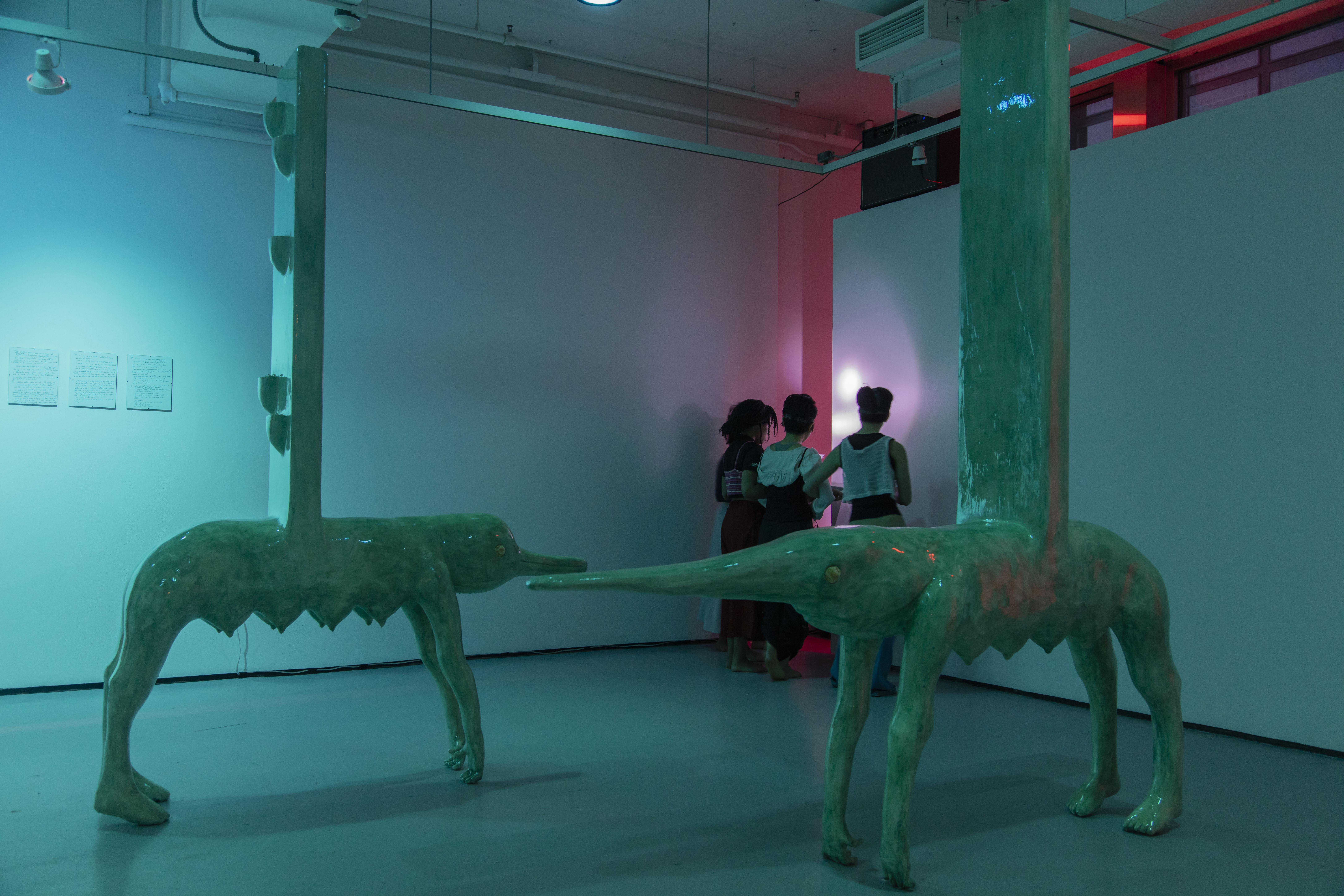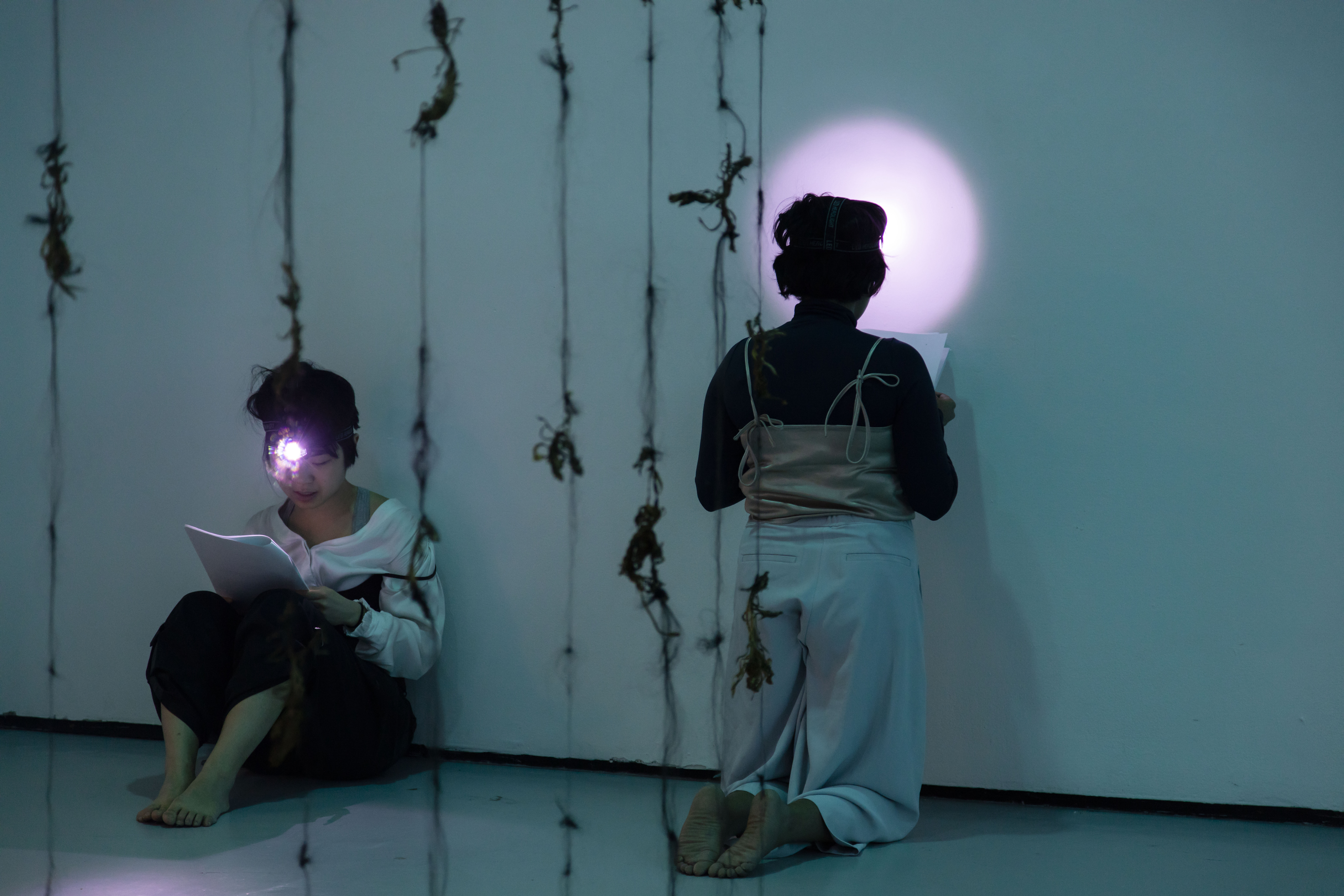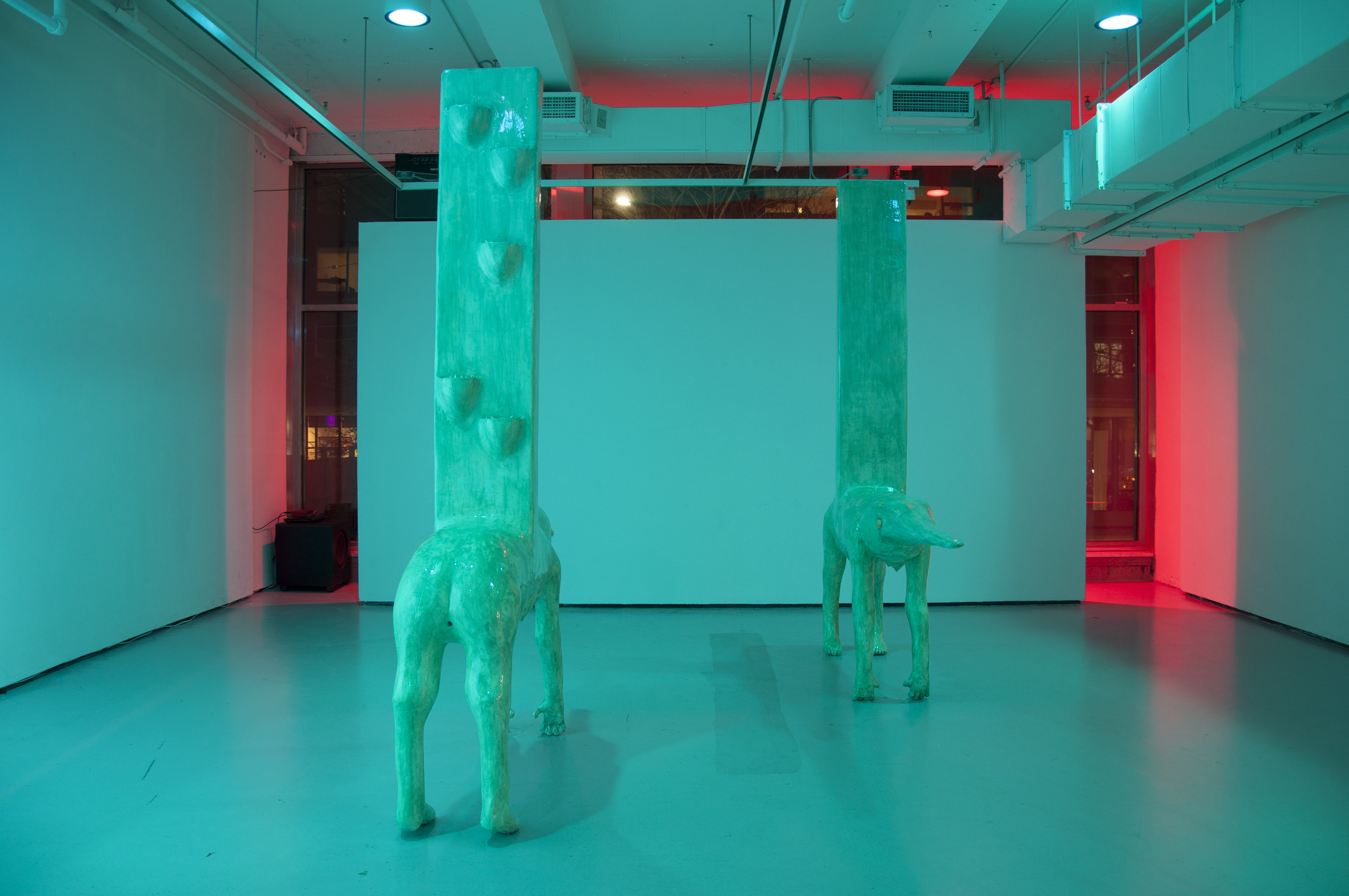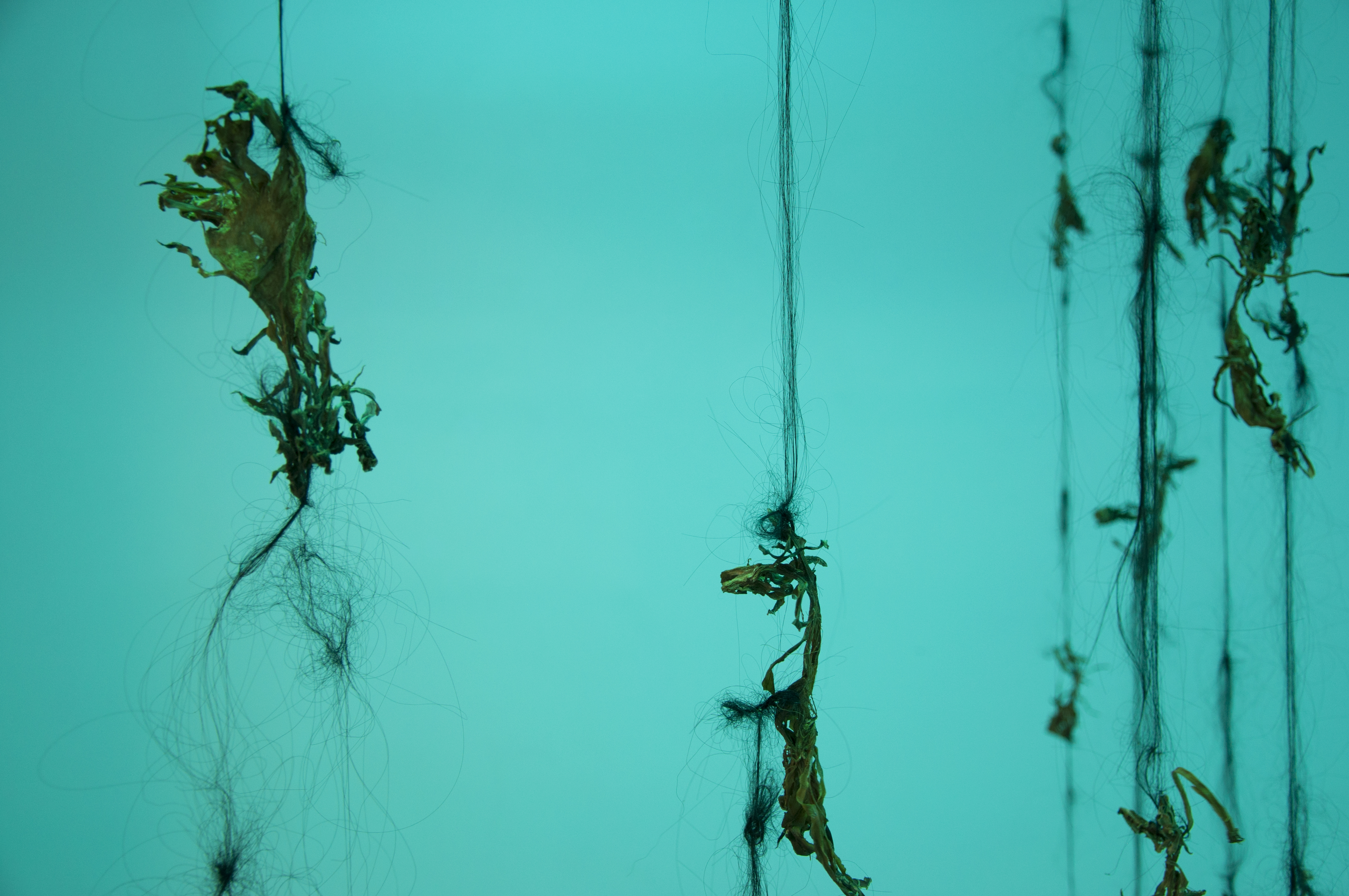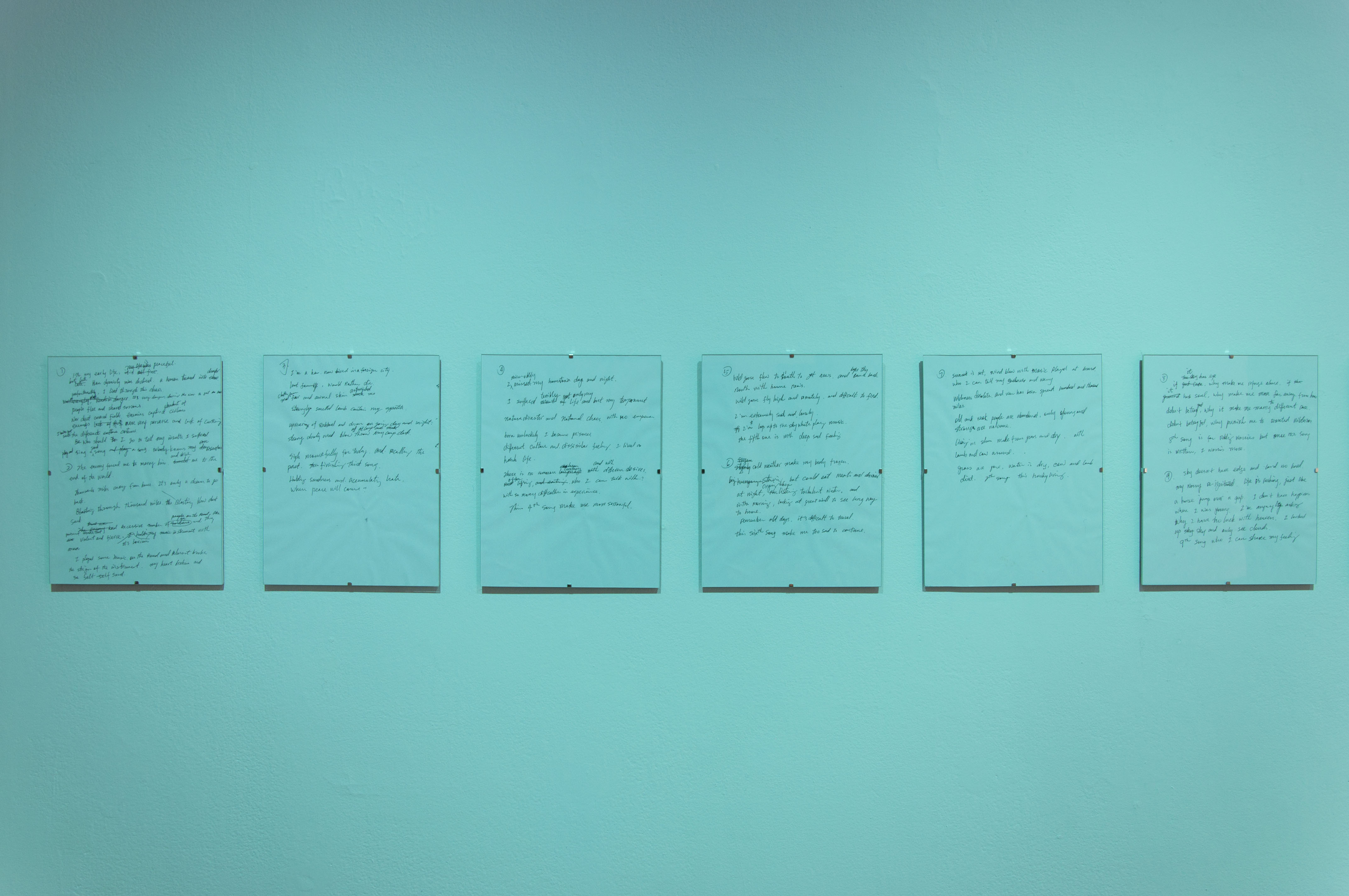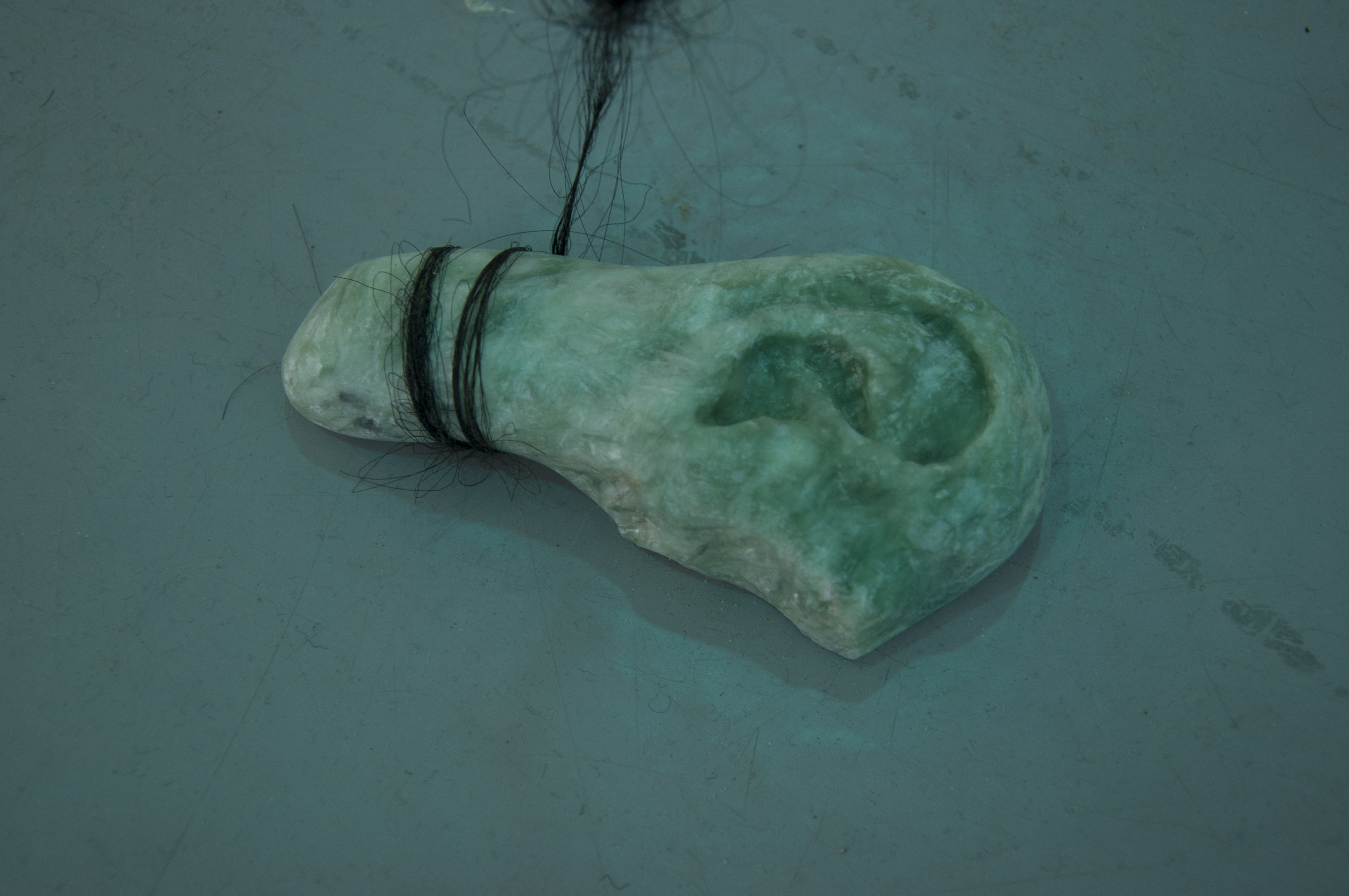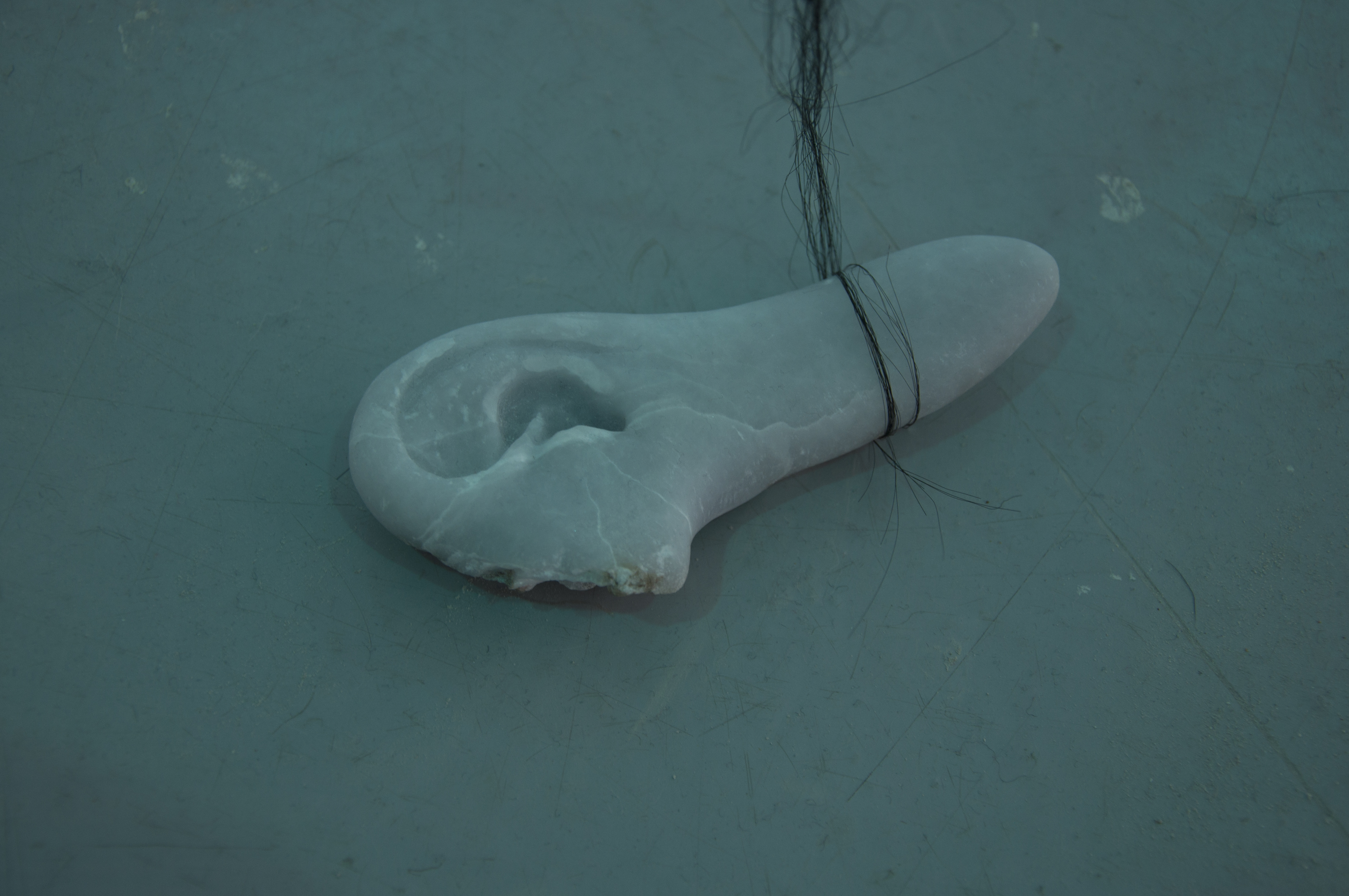fish mystery in the shift horizon
April 2019
Do you ever see ghosts?
What kind?
How many times in the past year?
Do you know how many?
How many years ago?
How many dead have you seen?
Have you ever heard?
Have you ever killed?
Describe.
- Interview questions on shifting baselines in river populations along the Yangtze, 2006
The catfish and dragons pinned to the bottom of the river, when angered, thrash and wreak havoc on the human villages that suppress them. "fish mystery"1 was a woman who trespassed wantonly in a phallic world of language and was, perhaps thus, executed for murder. Beings are sometimes written into history by being spoken for. When you choose your own adventure, all endings are already inscribed: the fantasy of a mother longing for child, citizen longing for home2, vixen longing for blood. The only way to know is to listen to the water. The songs that it hides. Singing is a way of knowing. Moving is a way of understanding. Touching is a way of remembering.
1 Yu Xuanji (844-871 AD), a Tang-dynasty poet, Daoist priestess, and courtesan
2 Cai Yan (177-250 AD), a late Han-dynasty poet and musician who lived as a captive of the Xiongnu.
Works
end of the line
alabaster, soapstone, wonderstone, dried lily flowers, hair
18 Songs for a Mongolian double-reed instrument, translated by Jie Lilly Lee
translation of Cai Yan's "胡笳十八拍" written by the artist’s mother, ballpoint pen on copy paper
past imperfect (Lipotes vexillifer)
hydrocal, gypsum, polystyrene, steel, burlap, dehydrated raw eggs, shellac, epoxy resin, color pigment, earth, teeth
past imperfect (Psephurus gladius)
hydrocal, gypsum, polystyrene, steel, burlap, dehydrated raw eggs, shellac, epoxy resin, color pigment, earth, teeth
Score for Retrieval
single-channel video
an upper limit / the starting point
bass amplifier, subwoofer, sound composition by Anteo Fabris
fish mystery in the shift horizon
durational performance, LED headlamps, artist’s translations of Cai Yan's "胡笳十八拍” written in the spirit of Yu Xuanji, appropriations of poems by Yu Xuanji, cited texts
Works Cited
Barad, Karen. “Quantum Entanglements and Hauntological Relations of Inheritance: Dis/continuities, SpaceTime Enfoldings, and Justice-to-Come.” Derrida Today, vol. 3, no. 2, 2010, pp. 240-268.
Cheng, Anne Anlin. The Melancholy of Race: Psychoanalysis, Assimilation and Hidden Grief. Oxford University Press, 2000.
Pauly, Daniel. “Anecdotes and the shifting baseline syndrome of fisheries.” Tree, vol. 10, no. 10, 1995, p. 430.
Smits, Gregory. “Conduits of Power: What the Origins of Japan's Earthquake Catfish Reveal about Religious Geography.” Japan Review, no. 24, 2012, pp. 41-65.
Sandlos, John et al. “Past Imperfect: Using Historical Ecology and Baseline Data for Contemporary Conservation and Restoration Projects.” Environmental Philosophy, vol. 9, no.1, 2012, pp. 49-70.
Tsing, Anna et al. Arts of Living on a Damaged Planet: Ghosts and Monsters of the Anthropocene. University of Minnesota Press, 2017.
Turvey, Samuel et al. “Rapidly Shifting Baselines in Yangtze Fishing Communities and Local Memory of Extinct Species” Conservation Biology, vol. 24, no. 3, 2009, pp. 778–787.
Photos by the artist and Kanthy Peng




